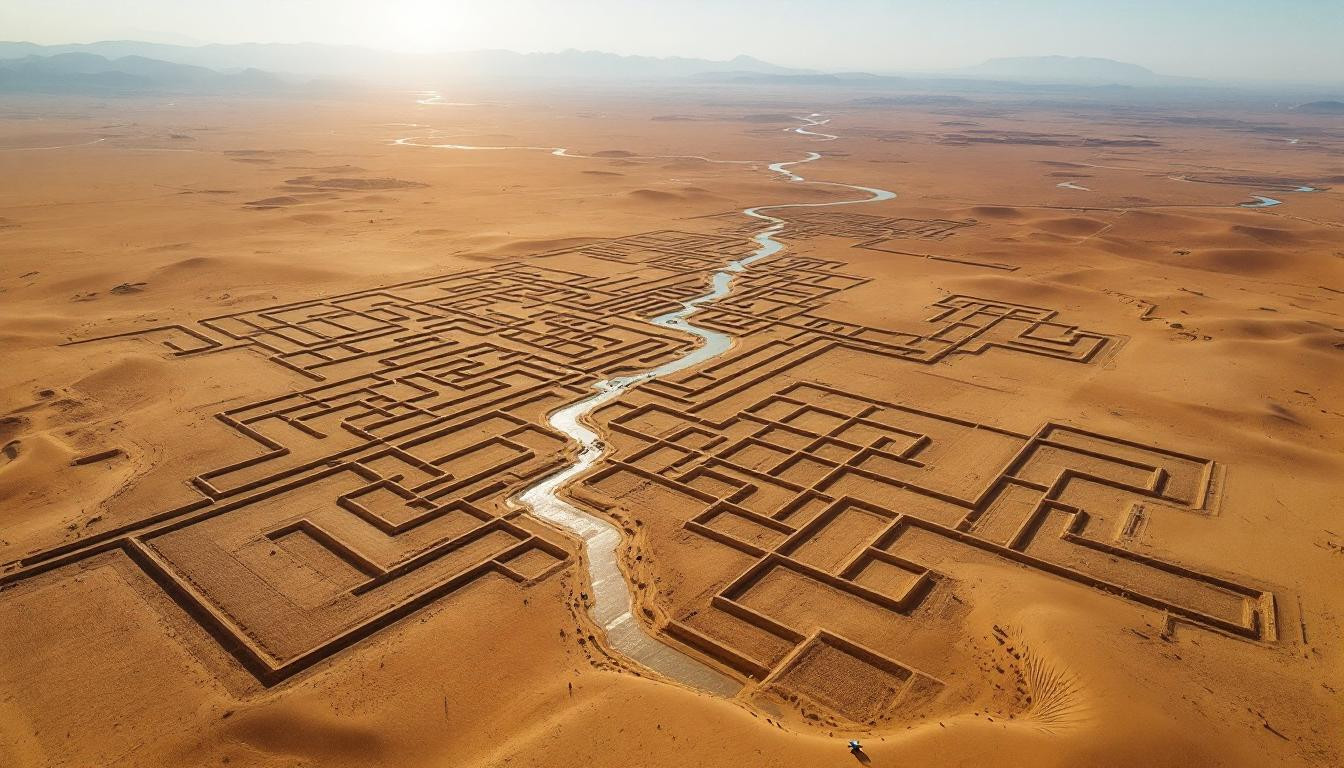This spring brings exciting archaeological news as researchers uncover a remarkable network of ancient canals beneath Eridu, widely recognized as the world’s oldest city. The groundbreaking discovery, announced just in time for Earth Day 2025, reveals an intricate irrigation system that fundamentally changes our understanding of early civilization.
Ancient engineering marvel hidden for millennia
Using advanced drone technology and satellite imagery, archaeologists have mapped more than 4,000 irrigation canals near Eridu in modern-day Iraq. This complex network includes approximately 200 primary canals – some extending up to 5.5 miles long – and connects to over 700 farmsteads across the region.
“This discovery redefines our understanding of early hydraulic engineering,” notes George Bunn, renowned science reporter. “The precision and scale suggest a level of centralized planning uncommon in early urban centers.”
A glimpse into humanity’s earliest urban agriculture
Dating from the 6th to 1st millennium BC, these canals predated most known Mesopotamian irrigation systems. Their sophisticated design enabled large-scale farming in what would otherwise be an arid, inhospitable environment.
According to the research team, “This network underscores Eridu’s role as a pioneer in Bronze Age urban agriculture.” The canals transformed southern Mesopotamia into a thriving agricultural center, supporting Eridu’s prominence as both a religious and economic hub.
How modern technology revealed ancient secrets
The discovery highlights how contemporary technological advances continue to reshape our understanding of ancient civilizations. A Remote Sensing Specialist from the project explained, “Without modern UAVs, we’d have missed 80% of these subsurface features.”
“Canals necessitate immense labor and knowledge in water management… further studies on their timeline are crucial to understanding agricultural transformations,” states Jaar Ji, Geoarchaeologist at Durham University.
The environmental lesson from history
This spring discovery carries particular relevance as we face modern climate challenges. The relationship between human innovation and environmental adaptation echoes through millennia.
Intriguingly, researchers believe the canal system’s abandonment coincided with the Euphrates River changing course around 1000 BC. This environmental shift ultimately led to Eridu’s decline but paradoxically preserved its canal system for future discovery.
What the canals tell us about ancient society
- Evidence of sophisticated centralized planning and engineering
- Indications of organized labor on a massive scale
- Signs of extensive agricultural knowledge and water management
- Cultural significance beyond mere utility
“Eridu’s canals weren’t just practical—they symbolized humanity’s taming of nature in Sumerian mythology,” notes a Cultural Anthropologist associated with the project exploring cultural dimensions of the discovery.
Future exploration and tourism potential
As spring field seasons get underway across archaeological sites worldwide, the Eridu discovery promises exciting new research directions. Iraq’s tourism board is already planning curated visits to the site, leveraging its UNESCO status and newfound significance.
Museums are also incorporating 3D models of Eridu’s canals into their exhibitions, bringing this ancient engineering feat to life for modern audiences interested in historical technological achievements.
The wider implications for archaeological research
This spring breakthrough is already influencing research on other ancient irrigation systems worldwide, including Maya canals in Belize and Zapotec infrastructure in Mexico. The methodological innovations employed at Eridu demonstrate how modern technology can reveal hidden historical dimensions.
As Earth Day approaches, this remarkable discovery reminds us how ancient civilizations developed sustainable solutions to environmental challenges – lessons that remain relevant in our modern quest for sustainable living.
